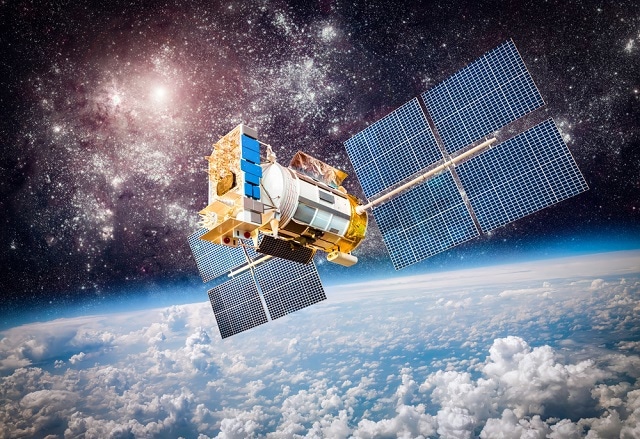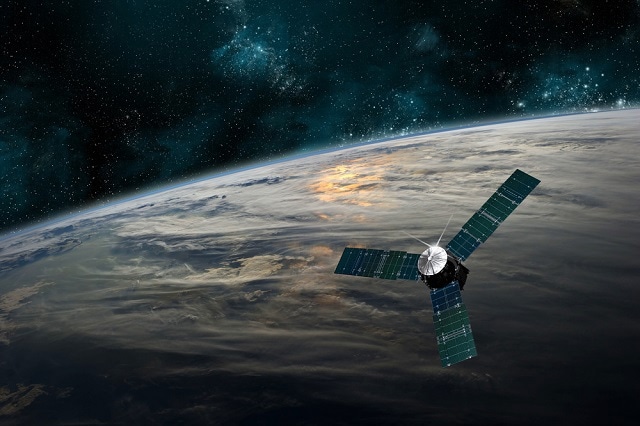
Image Credits: Andrey Armyagov/shutterstock.com
The aerospace industry has always played a fundamental role in developing new technologies which can be employed in different fields, such as the automotive industry, the navy and the medical sector.
The Wider Impact of Aerospace Research
Some of the biggest technological advancements over the last few decades have been instigated by continuous research in the field of aerospace engineering.
Due to the safety and quality requirements imposed on innovations developed in the aerospace sector, outstanding progresses have been made to improving products used in everyday life using new materials with advanced mechanical and physical properties, as well as novel design concepts and advanced manufacturing processes.
The space industry has the capability to move product requirements to very high standards. The ultimate objective of using pieces of complex equipment in the hostile environment of space, must take into consideration the high vacuum, thermal shocks and radiation.
Designing Satellites for Space
The material and the structural requirements in the design of satellites must allow advanced technological instrumentations and devices to be delivered without any damage, overcoming a series of loads due to the launch phase inside the fairing of a rocket.
Each component of a spacecraft has to resist to static loads, accelerations and mechanical shocks caused by the ignition-separation sequence of the launcher stages, until it is launched into an orbit around the Earth.
Eventually, the spacecraft can be transferred to an interplanetary orbit through an additional stage, or can be positioned on an Earth orbit (LEO and Geosynchronous) in relation to the specific mission.
For a satellite orbiting a planet or another celestial body, an adjustment of the actual obit needs to be regularly performed in order to keep the orbital parameters within the optimal range.
Different types of perturbation can cause the orbit of a satellite to change over time, as a consequence of the effect of factors such as atmospheric drag, solar wind and third body interactions (natural satellite influence).

Image Credits: Marc Ward/shutterstock.com
Chemical and Electric Thrusters
In this respect, both chemical and electric thrusters can be employed in order to keep the satellite on the desired orbit. Electric thrusters possess a relatively high value of Specific Impulse (Isp) compared to conventional chemical devices, thus allowing a decrease in the propellant consumption with respect to the specific mission requirements.
Electric thruster are characterized by having highly variable thrust values, together with the possibility of being re-ignited several times during a mission. However, due to the operational requirements of this type of thruster, based on the generation of electric and magnetic fields, the mass of the on-board power generation system has to be larger than the for a chemical thruster.
The thrust levels are lower compared to other space propulsion devices, resulting in longer manoeuvre periods related to the need to achieve a specific velocity variation (Δv) through a series of small increments.
Taking in consideration all the advantages of this technology, electric thrusters are becoming more common, especially in the case of space missions which require a very precise control of the spacecraft orbit.
The satellite GOCE is a low Earth orbiting satellite which was used to study the gravitational field of Earth. Due to the low altitude requirements, the spacecraft altitude was controlled by a specific type of electric engine, known as an ion thruster, in order to compensate for the atmospheric drag, keeping the orbital parameter within the mission’s requirement values.
Desiging Hall Effect Thrusters to Control Satellite Orbits
One of the most widely studied types of electric propulsion devices is the Hall Effect Thruster (HET). This device uses a magnetic field, combined with an electric field to ionize a gas flow (typically Xenon) generating a plasma. The ions in the plasma are accelerated by the application of the electric field inside an annular channel, which is neutralised at the end of the channel using electron flow.
Inside the channel, a ceramic material is used to withstand the high temperatures from the plasma generation process, whilst keeping the ionisation efficiency at the highest possible values. The ceramic material, such as Boron Nitride, is selected based on its resistance to sputtering and its secondary electron emission properties.
In addition to the acceleration channel, other critical elements of a HET include the electrodes, magnetic components, propellant pipes and structural elements. Due to the specific requirements of the different components of a HET, related to magnetic permeability in addition to strength-to-weight ratio and high temperature resistance, a variety of materials are currently employed in the design of this particular type of devices such as stainless steel, aluminium alloys, iron and copper (electrical connections).
These materials, selected as a function of different structural and electrical requirements, are integrated together with the final aim of creating a device with advanced characteristics in terms of strength and rigidity, taking into account the total mass, as well as the electrical and heat conduction characteristics.
How Do Satellites Get & Stay in Orbit?
How Do Satellites Get & Stay in Orbit? - SciShow Space/YouTube
Testing Hall Effect Thruster Designs
One of the fundamental steps in developing a Hall Effect Thruster is mechanical qualification and acceptance testing, which allows the equipment design to meet the specific robustness and weight criteria related to the mission requirements.
The European requirements for the conduction of this process follow the ECSS (European Cooperation for Space Standardization) regulations, defining the types of test, together with the specific parameters and values that allow the spacecraft equipment to be safely launched within a rocket.
In order to realize the series of qualification and acceptance tests on an electric thruster, devices such as electrodynamic shakers are used which simulate the vibrations and the mechanical shocks associated to the specific launch vehicle.
However, before conducting the actual testing procedure, it is necessary to simulate the same types of mechanical loads using Finite Element Method analysis. This step, employed during the whole design phase and often during the component prototyping, can allow structural issues such as critical natural frequencies, stress concentration factors, mass distribution to be discovered and corrected prior to the execution of expensive testing and manufacturing of equipment.
Designing equipment in order to tolerate the complex system of mechanical loads related to both the launch phase and the operation in the space environment is not an easy task, especially if other factors such as radiation and thermal loads have to be taken into account.
Thus, each step of the design process needs to be carefully integrated with simulations, prototyping and testing in order to achieve not only the required structural strength but also a reliable device operation during both short and long-term missions, from Earth observation to solar weather monitoring.
Sources and Further Reading
Disclaimer: The views expressed here are those of the author expressed in their private capacity and do not necessarily represent the views of AZoM.com Limited T/A AZoNetwork the owner and operator of this website. This disclaimer forms part of the Terms and conditions of use of this website.